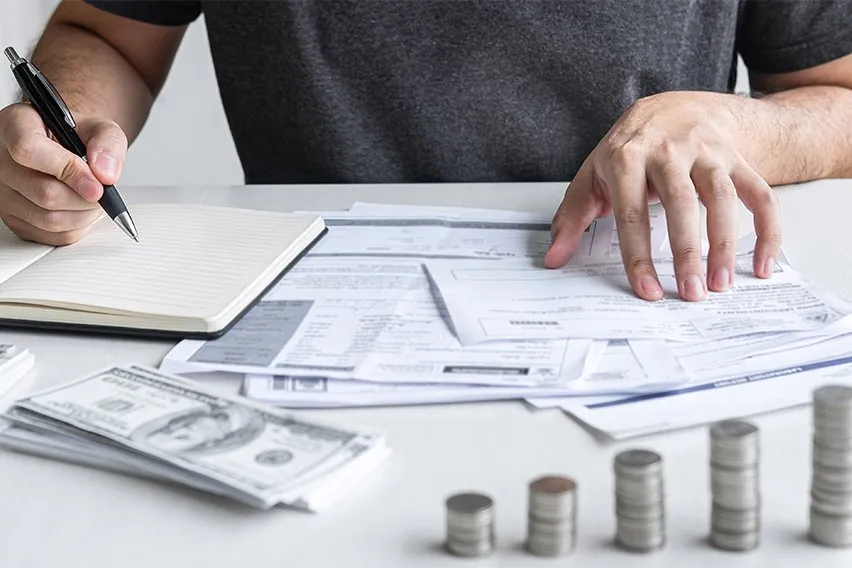What Is a Credit Default Swap (CDS)? Definition, Pros & Cons

In business, as in life, you want to be protected in the event that the worst happens.
You might typically think of protecting yourself with insurance policies. But a method that people can also use is a financial derivative known as a credit default swap.
But what exactly is a credit default swap? We’ll break down the definition and give you a list of the pros and cons of utilising this method.
Here’s What We’ll Cover:
What Is a Credit Default Swap?
How Do Credit Default Swaps Work?
What Is the Use of a Credit Default Swap?
The Pros of Credit Default Swaps
The Cons of Credit Default Swaps
Credit Default Swaps and the 2008 Financial Crisis
What Is a Credit Default Swap?
A credit default swap, or CDS, is a financial derivative that goes some way to guaranteeing against bond risk.
It allows an investor to “swap” or offset their credit risk with that of another investor. These swaps work in a similar manner to insurance policies. It means that an investor can buy protection against an unlikely, but potentially disastrous event.
The majority of swaps that take place are to protect against the default of high-risk municipal bonds. They also protect against sovereign debt and corporate debt, mortgage-backed securities, junk bonds and collateralized debt obligations.
For example, let’s say that a lender is worried that a borrower is going to default on a loan. The lender could then utilise a credit default swap to offset that particular risk and protect their investment.

How Do Credit Default Swaps Work?
A CDS contract involves the transfer of credit risk between two parties.
As we mentioned earlier, it works in a similar way to insurance. This is because it provides the buyer of the contract – who will most likely own the underlying credit – purchases protection. This is in a similar way to purchasing insurance.
This “insurance” would then help protect them from default, a credit rating downgrade or any other negative form of credit event.
The buyer will hand off the credit risk to the seller for a periodic protection fee – which is similar to an insurance premium. That would mean that they are obligated to pay only if a negative credit event occurs.
The buyer of the CDS will gain protection or earn a profit when a negative credit event takes place. If this happens, the party that sold the credit protection and assumed the credit risk must deliver payments. This should meet the value of payments that the reference bond would have originally paid to the protection buyer.
If there is no credit event, the seller of protection would receive periodic fees from the buyer. They would receive profits if the entity’s debt remains good throughout the life of the contract and no payoff takes place.
It’s important to note that CDS don’t eliminate the credit risk, it has just been shifted. The contract seller is taking a large risk that they could incur significant losses if a credit event occurs.
There is also the risk that the CDS seller defaults at the same time that the borrower defaults. This is essentially what happened in the 2008 credit crisis which we will cover later.
What Is the Use of a Credit Default Swap?
There are two main uses of a CDS:
Hedging
The first is that it can be used as a hedge or insurance policy against the default of a bond or a loan. Any company or individual that is exposed to a large share of credit risk can use a CDS to shift a portion of risk by buying protection.
This is a great way to reduce exposure but not eliminate it. It also helps to avoid taking a tax hit or eliminate exposure for a certain period of time.
Speculation
The second use is for “speculators” to place their bets about the quality of credit for a particular entity.
Speculation has grown to be the most common function for a CDS contract. This is proved by the fact that the value of the CDS market is larger than the bonds and loans that the contracts reference. A CDS is an efficient way for a speculator to take a view on the credit of a reference entity.
An investor can also replicate the exposure of a bond or a portfolio of bonds using CDS. This can help them in a situation where one or several bonds are difficult to obtain in the open market.
The Pros of Credit Default Swaps
There are a number of different benefits to credit default swaps:
- Protect Lenders Against Credit Risk: Swaps go some way to protecting lenders. This then enables investors and buyers to fund riskier ventures as they have a form of security that they might have otherwise not had.
- Boost Economic Growth: When investors have more security, they have the confidence to invest in more risky ventures. This helps to spur innovation and creativity which in turn boosts economic growth.
- Promoting Diversification: Companies that sell swaps protect themselves by diversifying their portfolios. So if a company or industry defaults, they have offset this by the fees they are making from other successful swaps. This can provide a steady stream of payments with little risk.
The Cons of Credit Default Swaps
- Regulation: Swaps were largely unregulated until 2010. This meant that no government agency set out to make sure that the seller had the capital to pay the holder if the bond defaulted.
- Overconfidence: Bond purchasers were emboldened by CDS contracts which gave them a false sense of security. They ended up buying riskier and riskier debt thinking that CDS protected them from any form of losses. This eventually helped lead to the 2008 financial crisis.

Credit Default Swaps and the 2008 Financial Crisis
In the United States, by mid-2007 there was more than $45 trillion invested in credit default swaps. This amount was more than the money invested in the U.S. stocks, mortgages and U.S. Treasuries combined.
Lehman Brothers was a key player in the cause of the crisis. As a firm, they owed $600 billion in debt, of which only $400 was supposed to be covered by credit details swaps.
When the debt was eventually due, Lehman Brothers couldn’t cover the cost so they declared bankruptcy. This caused further issues as the companies that sold the swaps didn’t have enough cash to cover the contracts. This led to the Federal Reserve having to bail this debt out.
This led to a collapse of the CDS market. People realised that the insurance wasn’t able to cover large widespread defaults. This in turn led to funding for small businesses and mortgages being cut off.
This was a large factor that kept unemployment in the United States at record-high levels.
Key Takeaways
Despite the troubled history and concerns of credit default swaps, they are proven to be a useful portfolio management and speculation tool.
They are likely to remain an important part of the financial markets. But the lessons learned from the 2008 crisis may put a stop to the high-value and widespread contracts being picked up.
Find more helpful articles like this on our Resource Hub.
RELATED ARTICLES

 What Are Faster Payments & How Long Does a Faster Payment Take?
What Are Faster Payments & How Long Does a Faster Payment Take? What Is a Bank Receipt?
What Is a Bank Receipt? 3 Top Mobile Card Machines
3 Top Mobile Card Machines What Is a Card Reader & How to Use It?
What Is a Card Reader & How to Use It? What Is a Payment Reference Number?
What Is a Payment Reference Number? What Is a Bank Transfer? Everything You Need to Know
What Is a Bank Transfer? Everything You Need to Know